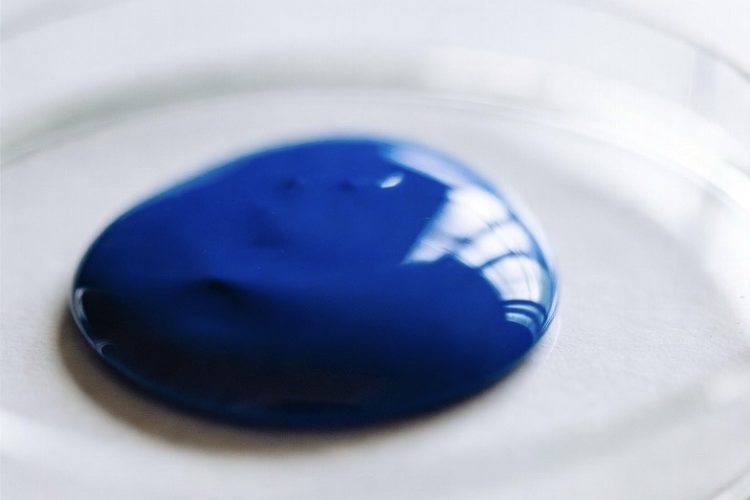In 2025, scientists discovered thriving microbial life in deadly electric-blue mud from deep-sea mud volcanoes near the Mariana Trench. This caustic serpentinite goo has a bleach-like pH of up to 12.6 and almost no nutrients, yet it hosts extremophilic archaea and bacteria with special cell membranes that resist extreme alkalinity. Powered entirely by serpentinization—a natural reaction that produces hydrogen and methane in subduction zones—these microbes use sulfate reduction and methane consumption for energy, proving life can survive in one of Earth’s harshest environments. The find expands the known limits of life, offers clues to how life began in alkaline hydrothermal systems billions of years ago, and boosts hope for finding biology on icy moons like Enceladus and Europa. Far from sterile, this toxic blue mud reveals a hidden, self-sustaining biosphere deep beneath the ocean floor.
Long Version
Deadly Blue Goo Mystery: Microbial Life Thrives in One of Earth’s Most Hostile Environments
In late 2025, a remarkable discovery emerged from the deep Pacific Ocean: researchers found clear evidence of active microbial life inside a vivid electric-blue mud recovered from submarine mud volcanoes near the Mariana Trench. This material, often described as deadly blue goo due to its extreme causticity, has a pH as high as 12.6—strong enough to dissolve skin and most organic matter on contact. Despite this bleach-like chemistry and near-total absence of nutrients, the mud hosts a thriving community of extremophilic microbes.
The findings reveal a previously unknown high-pH ecosystem deep beneath the seafloor, sustained entirely by geochemical energy in an environment long assumed to be sterile.
Geological Setting: Serpentinite Mud Volcanoes of the Mariana Forearc
These mud volcanoes form in the Mariana subduction zone, where the Pacific Plate is forced beneath the Philippine Sea Plate. As the descending slab releases water at depth, that water rises into the overlying mantle and triggers serpentinization—a reaction that converts ultramafic mantle rocks (primarily olivine-rich peridotite) into serpentinite and brucite.
The process is highly alkaline-producing: it liberates molecular hydrogen, methane, and other reduced compounds while generating fluids with pH values between 10 and 12.6. The resulting low-density serpentinite mud becomes buoyant, ascends along faults, and erupts at the seafloor to build large mud volcanoes, some several kilometers wide and hundreds of meters tall.
Cores recovered from these structures—particularly from sites nicknamed Pacman and others in the forearc—show thick layers of pristine electric-blue mud. The intense color comes from finely disseminated reduced iron; upon exposure to oxygen, the mud rapidly oxidizes and shifts to green or brown.
An Environment That Should Be Lifeless
The chemistry inside these mud flows is extraordinarily hostile:
- pH routinely reaches 12–12.6, rivaling concentrated lye or oven cleaner.
- Organic carbon and electron acceptors (sulfate, nitrate, oxygen) are present only in trace amounts.
- Pressure exceeds 300–600 atmospheres at water depths of 3,000–6,000 meters.
- Temperatures remain low (2–10 °C), ruling out typical hydrothermal energy sources.
Under such conditions, most known organisms would denature instantly. Traditional DNA-based surveys often return blank results because cell densities are extremely low.
Evidence of Life: Lipid Biomarkers and Active Metabolism
Researchers instead analyzed lipid biomarkers—stable fats derived from microbial cell membranes. Intact polar lipids (still attached to their polar head groups) serve as unambiguous signs of living cells, while degraded core lipids indicate past communities.
Key findings from the blue serpentinite layers include:
- Abundant archaeal tetraether and diether lipids with reinforced membrane structures that resist alkaline hydrolysis.
- Bacterial fatty acids adapted for extreme pH tolerance.
- Depth-dependent shifts in lipid profiles, showing a transition from surface-influenced microbes to a specialized deep community.
- Signatures of sulfate reduction, methanotrophy (methane consumption), and hydrogenotrophy—metabolic strategies that extract energy from the hydrogen, methane, and sulfide generated by ongoing serpentinization.
These organisms are true chemosynthesizers: they fix carbon dioxide using geochemical energy, entirely independent of sunlight or surface-derived organic matter.
Why This Discovery Matters
1. Expanding the Known Limits of Life
The Mariana serpentinite ecosystem pushes the upper pH boundary for life far beyond previous records (most alkaline habitats top out around pH 11). It proves that specialized membrane chemistry can protect cells even in caustic, nutrient-poor conditions.
2. Insights into the Origin of Life
Serpentinization reactions create steep redox gradients, abundant hydrogen, simple organic compounds, and alkaline conditions—all ingredients hypothesized for the emergence of the first cells. Modern high-pH serpentinites like these are among the closest analogs to the environments where life may have begun on Earth billions of years ago.
3. Astrobiology Implications
Similar serpentinization is thought to occur today beneath the icy crusts of moons such as Enceladus and Europa. The discovery that life can persist in Earth’s analog systems raises confidence that lipid biomarkers detected on those worlds could indicate genuine biology.
4. Earth’s Hidden Biosphere
The deep oceanic subsurface may harbor as much biomass as all surface life combined. Subduction-zone mud volcanoes demonstrate that active plate tectonics itself helps sustain portions of this vast hidden biosphere by continuously supplying fresh reactants and fluids.
Looking Ahead
Future work aims to culture these extraordinary microbes under simulated high-pH, low-nutrient conditions, sequence their genomes, and map how seismic activity influences fluid flow and microbial activity. Long-term seafloor observatories and deeper drilling will further illuminate the dynamic interplay between geology and biology in these remarkable systems.
Far from being a barren curiosity, the deadly blue goo has revealed itself as a vibrant, self-sustaining ecosystem—one that underscores life’s astonishing ability to colonize even the most unforgiving corners of our planet.









